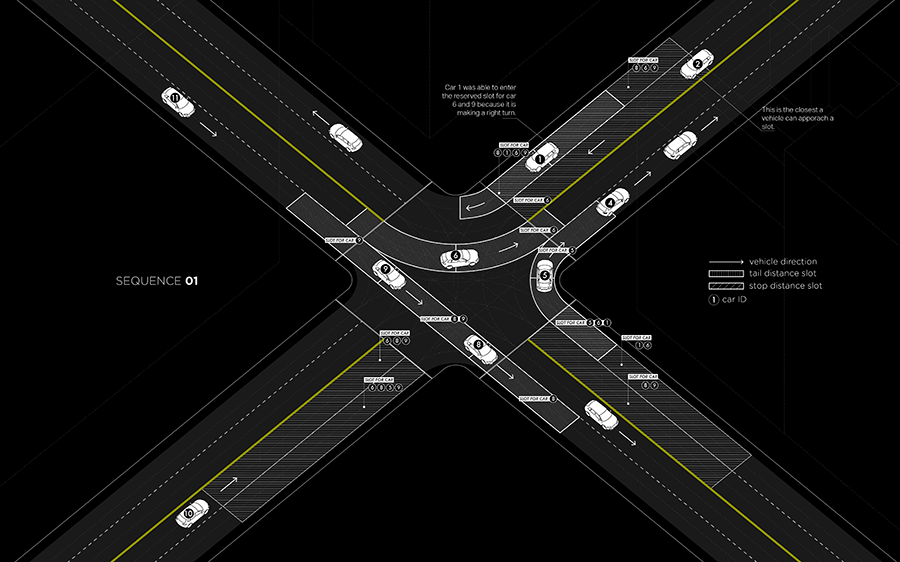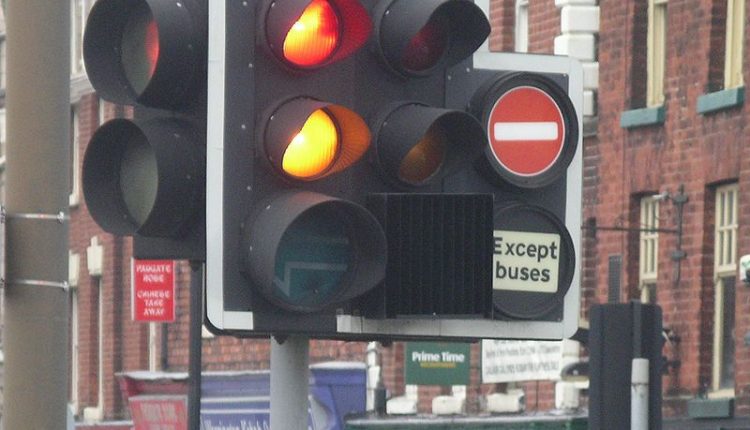MIT wants to replace traffic lights with connected intersections
Hate those dreaded red lights? Maybe we don’t need them after all. At least that’s what researchers at the Massachusetts Institute of Technology (MIT), the Swiss Institute of Technology (ETHZ), and the Italian National Research Council (CNR) think.
The international team has developed slot-based intersections that could replace traditional traffic lights, which would reduce delays, create better traffic patterns, and lower fuel consumption.
The team’s idea is based on a future filled with autonomous vehicles.
Here’s what the researchers are thinking. Picture sensor-filled, self-driving vehicles. These cars would pass through traffic intersections by communicating with other vehicles, while at the same time remaining at a safe distance from them, rather than stopping completely at traffic lights. By removing the wait time caused by traffic lights, slot-based intersections would speed up traffic flow.
“Traffic intersections are particularly complex spaces, because you have two flows of traffic competing for the same piece of real estate,” said Professor Carlo Ratti, Director of the MIT Senseable City Lab, which initiated the study. “But a slot-based system moves the focus from the traffic flow level to the vehicle level. Ultimately, it’s a much more efficient system, because vehicles will get to an intersection exactly when there is a slot available to them.”

Slot-based intersections are similar to slot-based management systems used for air-traffic control. When a car approached an intersection, it would automatically contact a traffic management system to request access. Each self-driving vehicle is assigned an individualized time or “slot” to enter the intersection.
This method puts an end to stop and go behavior, which means reduced pollutants and greenhouse gases that come along with the acceleration and deceleration of vehicles. These slot-based intersections would also be flexible to accommodate pedestrian and bicycle crossing with vehicular traffic.
The team’s study results showed that intersections providing real-time slot allocation could double the number of vehicles that an intersection with traffic lights can manage.
“Travel and waiting times would be considerably reduced and fuel consumption would go down,” said Professor Dirk Helbing of the ETHZ. “This would make a contribution to the reduction of emissions and
climate change. Overall, people would benefit, the environment would benefit, and cities would become more livable.”
The researchers believe that the system could improve intersection performance, reduce traffic, and improve travel time.
“It is important that we start looking into the impact of self-driving vehicles at the city level as soon as possible,” said Ratti. “The lifetime of today’s road infrastructure is many decades and it will certainly be impacted by the mobility disruptions brought in by new technologies.”
Watch the video below for more information, or visit MIT Senseable City Lab’s website.


Comments are closed, but trackbacks and pingbacks are open.